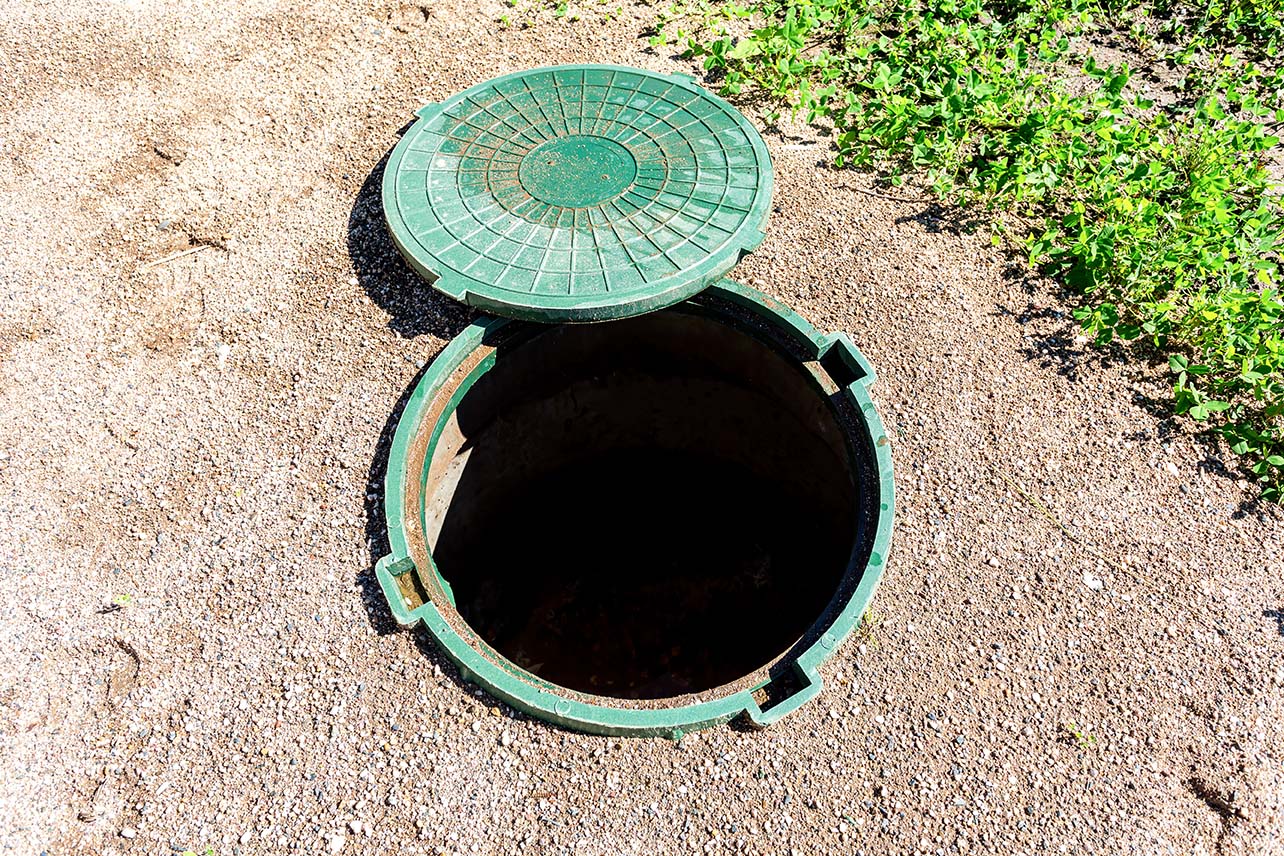There are some easy steps you can do to catch, minimise, and perhaps fix the problem of septic tank deterioration.
Top layer colour palette
When the lid is lifted on the septic tank, there should be a top layer of deep brown product full of worms and worm casts. This indicates the tank is operating correctly. Under this layer is the water layer and then lastly the dead sludge layer.
When a septic tank isn’t desludged regularly, the top layer and the sludge layer increase and this decreases the water layer which increases the risk of sludge entering the disposal field. Although the tank might be operating without smell or any visual problems, it’s the sludge on the bottom that becomes the potential risk to the whole system. It is very beneficial to point this out to the homeowner.
Sometimes when the lid is lifted on a septic tank there is a pinkish coloured top layer. This is perfectly normal if the laundry waste is plumbed into the septic tank. This will slow down the efficiency of the bacteria meaning the top layer will increase more quickly and often the bacteria will produce more sludge.
If the top layer is a grey muddy colour and odorous, this indicates that a ‘cold water only’ washing machine powder (eg. Cold Power or Cold Water Surf) is being used. The cold water enzymes will be interfering with the bacteria and causing the waste to not break down properly and the water layer in the middle of the tank will be murky with fine sediments of paper. This will enter the disposal field causing it to fail. This can be simply fixed by instructing the homeowner to change to a hot and cold washing machine powder (eg. Persil or Drive). They can still do cold water washes as normal but it will mean the enzymes won’t keep working in the cold septic tank.
T pipe
Always check the inlet T pipe is free from fat and scum buildup when the tank is being cleaned/de-sludged. As fat enters the pipework from the kitchen to the tank, it cools down and will settle at the T pipe where it enters the tank.
Balance your solids and scum
Check how many solids and scum are present. If it’s more than a third of the operating depth, you should service the tank more often to reduce the gas-producing bacteria that will breakdown the concrete.
Concrete tanks and sulfuric acid
If you’ve got crumbling concrete around an outlet that is white, you might have unacceptable levels of sulfuric acid in your septic tank. When hydrogen sulphide is present – which it should be because it's produced naturally by the bacteria in the septic system – and it combines with moisture in the air inside a tank above the level of the liquid material, it forms sulfuric acid and can disintegrate concrete. You might find small areas of white decay or it might have reached the tank sides and that will show rusty streaks. These are signs of more serious structural problems.

